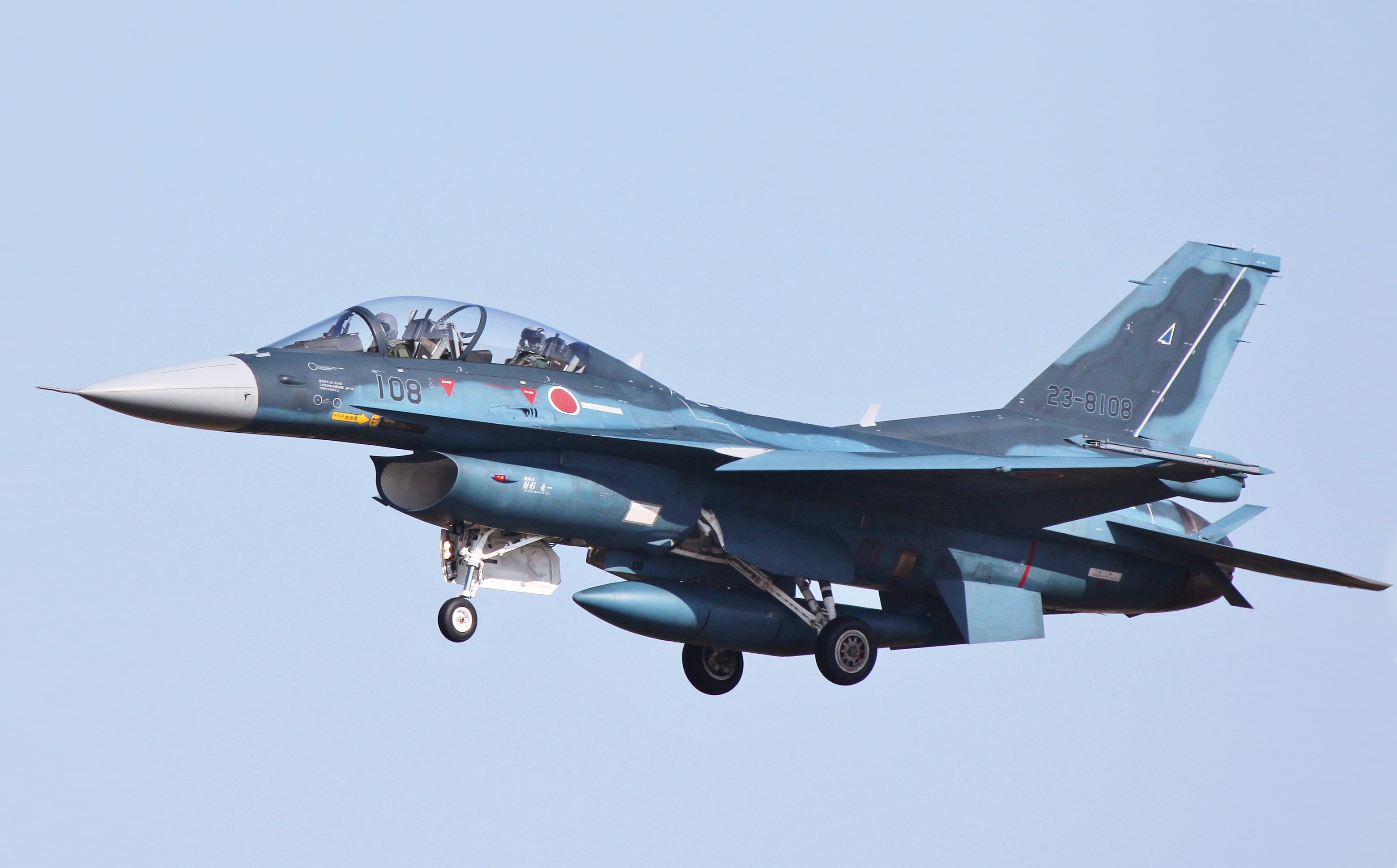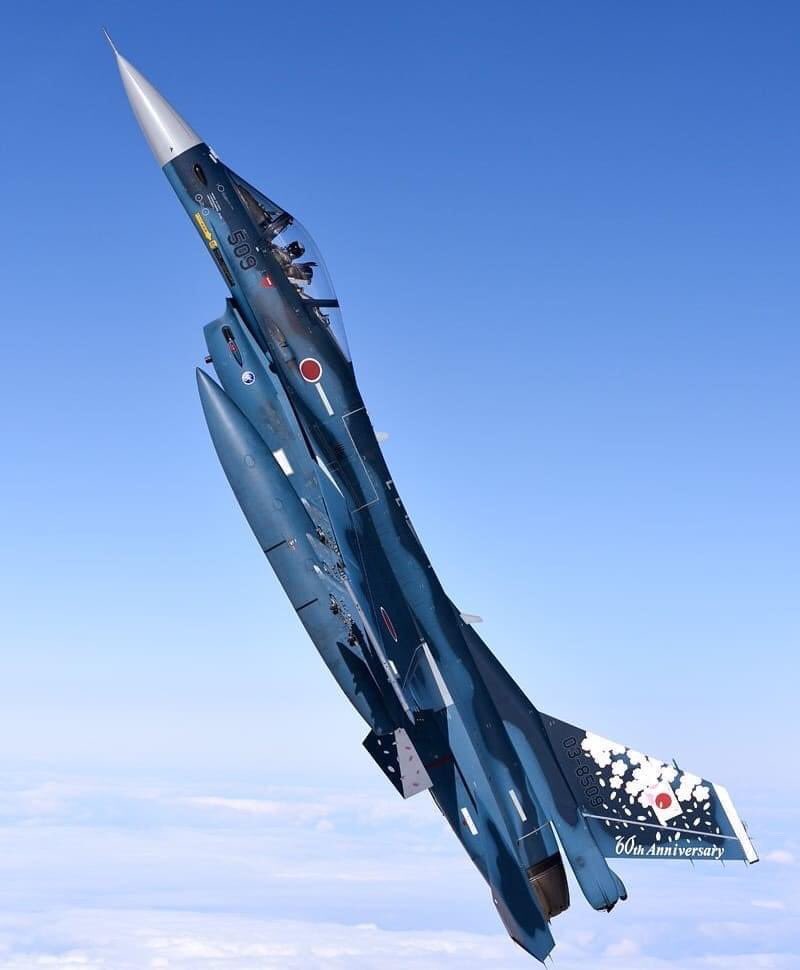The Mitsubishi F-2 is Japan’s indigenous fighter jet based on the US F-16 aircraft. It was jointly developed by the two allies for the Japanese Air Self Defense Force (JASDF). One of the F-2 jets was recently involved in a dramatic mid-air incident during an aerial interception.
China’s Much-Hyped Stealth Drone ‘Sharp Sword’ Launches Swarming Decoys At Enemy Warships In A New Viral Video
The F-2 is a single-engine multirole fighter jet developed by Japan’s Mitsubishi Heavy Industries (MHI) and American company Lockheed Martin. The F-2A is the single-seat version whereas F-2B is the twin-seat variant.
The JASDF had picked a variant of the F-16C to replace its aging fleet of Mitsubishi F-1 fighter jets in 1987. In 1988, Mitsubishi was awarded the contract for the development of this aircraft which came to be known as the F-2.
This program involved a transfer of technology from the US to Japan and the production cost was split in a way that 60% was paid by Japan and the remaining 40% by the US.
JASDF received the first production aircraft in March 2005. As part of its first overseas deployment, the F-2 was sent to the US’ Anderson Air Force Base in Guam for participating in the US-Japan military drills in June 2007. During these exercises, the F-2 fighters dropped live weapons for the first time.
China Testing Combat Drone Ships At Secret Location; Could Amplify Regional Patrols After US Submarine Accident – Expert
The F-2’s cockpit is equipped with three multifunction displays. This also includes LCD developed by Yokogawa and the pilot’s head-up display made by Shimadzu. The aircraft has an integrated electronic warfare system, mission computer, and an active phased radar — all developed by Mitsubishi Electric.

The aircraft is armed with an M61A1 Vulcan 20 mm multi-barrel gun. It has 13 hardpoints for carrying weapon systems and stores – one is on the fuselage centreline, one on each of the wingtips, and five under each wing.
In addition to this, the aircraft is also capable of deploying the Raytheon AIM-7F/M medium-range Sparrow air-to-air missile, the Raytheon AIM-9L short-range Sidewinder and the Mitsubishi Heavy Industries AAM-3 short-range air-to-air missile.
Apart from these, the F-2 is also armed with the ASM-1 and ASM-2 anti-ship missiles. It is equipped with a General Electric F110-GE-129 after-burning turbofan engine which can develop 131.7kN. The aircraft has a speed of Mach 2.
Turkish Presidential Office Confirms Plan To Upgrade F-16 Fighter Jets; Says Not Given-Up On Fifth-Gen, Stealth F-35s
F-2 Involved in Mid-Air Incident
A Mitsubishi F-2 belonging to the 6th Tactical Fighter Squadron of the 8th Air Wing was involved in a peculiar incident during an aerial interception on October 10. The fighter jet stationed at Tsuiki Air Base, northeast of Kyushu Island took off from the base and was on its way to intercept a foreign aircraft, which could potentially trespass the Japanese air space.
Five minutes after the takeoff, as the aircraft was flying over the mountains near the city of Asakura, the F-2’s cockpit canopy and its emergency ladder suddenly fell off from the plane, leaving the pilot exposed to air mid-flight.

The canopy measured 150 cm in length, 90 cm in width, and had a height of 80 cm. It was made of aluminum and acrylic glass and had a weight of approximately 90 kg. The emergency ladder had a weight of around 480 g.
Following this incident which took place at around 12:50 PM, the F-2 made an emergency landing at the Tsuiki Air Base in the prefecture. The Self Defense Forces are searching for the lost canopy and the emergency ladder which are believed to have fallen in Asakura, Fukuoka Prefecture.
Despite Rafale Boost, Why Indian Air Force Remains ‘Ill-Equipped’ To Battle Chinese PLAAF Over The LAC?
According to a report by Kyodo News on October 11, Japan’s Ministry of Defense said that no injuries or damage of property as a result of the incident have been reported till now.
The ministry also said that another plane had been deployed in place of the damaged F-2 fighter jet for the scramble mission. “We are sorry for causing concern to local residents and the general public,” the ministry said in a statement.
Chief Cabinet Secretary Hirokazu Matsuno said the incident was dangerous as it could cause serious harm to the local people. Yoshitomo Aoki, an aviation expert, said “such a loss of a canopy is rare but that loosening or defective parts could cause such an incident”. “But the loss of the canopy would not affect an aircraft’s flight functions”, he added.




